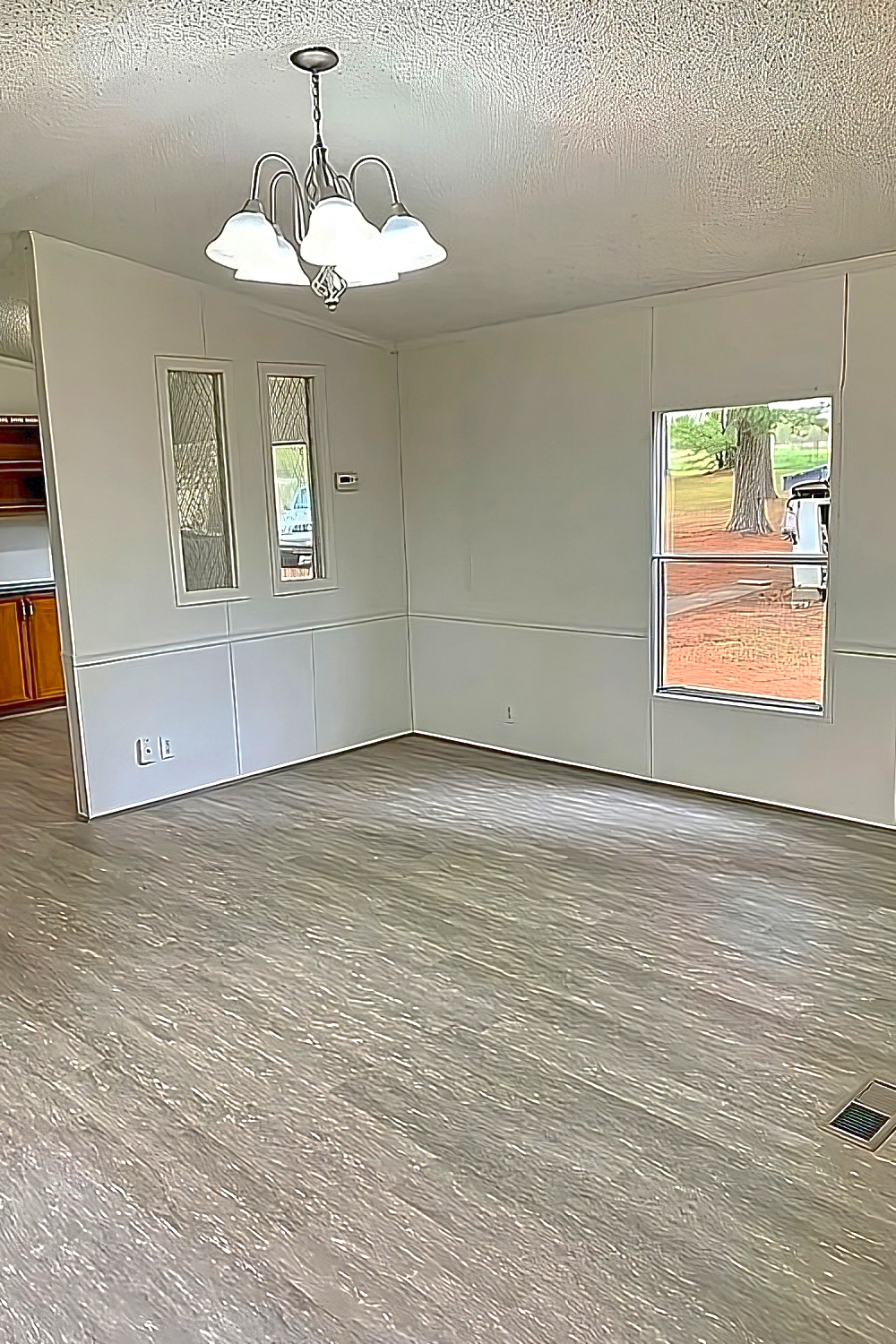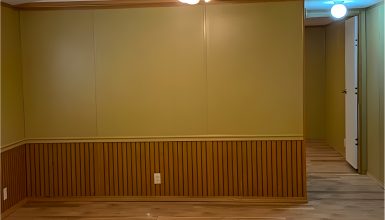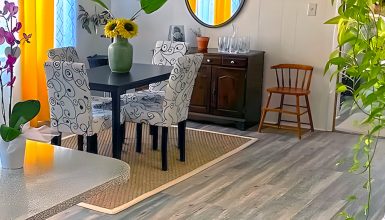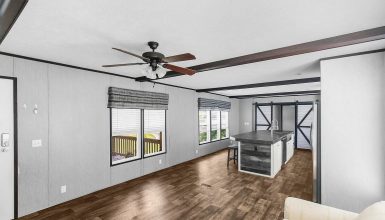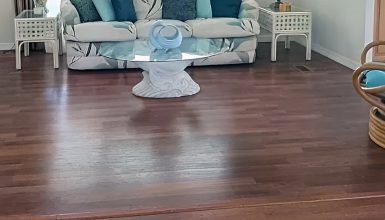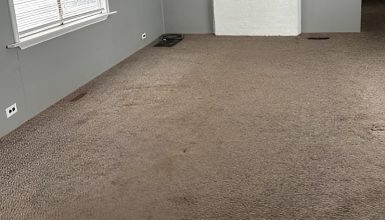Mobile homes have their own charm and challenges, especially regarding flooring. Just like any home, the floors in a mobile home can face problems over time. Water damage, uneven surfaces, and the usual wear and tear are common. These issues might seem small initially, but they can grow into more significant headaches if not fixed. So, let’s dive into these common problems and their fixes.
1. Water Damage
Water damage in mobile homes can sneak up on you. It usually starts with a small leak. This might come from a roof, window, or plumbing issue. Over time, these leaks can cause big problems for your floors.
Causes
Think about water slowly dripping onto your floor. It’s not just the water on the surface; it’s also what’s happening underneath. The water seeps into the floor, leading to rot, mold, and weakening of the structure. These leaks can come from anywhere: a loose roof tile, a cracked window seal, or even a leaky pipe.
Identification
So, how do you know if your floor has water damage? Look for soft spots on the floor. These areas might feel spongy when you walk on them. Another sign is a musty smell, which often means mold. Sometimes, you can see discoloration or stains on the flooring, too.
Step-by-Step Repair Guide
1. Locate the Leak
First things first, find where the water is coming from. This might require a bit of detective work. Check your roof, windows, and pipes. Finding the source is key to a lasting fix.
2. Stop the Leak
Once you find it, fix the leak. This might mean patching a roof, sealing a window, or repairing plumbing.
3. Assess the Damage
Look at how much of your floor is affected. This will help you plan your repair.
4. Remove Damaged Flooring
Carefully take out the damaged parts. Be sure to wear gloves and a mask, especially if there’s mold.
5. Replace Flooring
Put in a new flooring material that matches your existing floor. This might be wood, laminate, or whatever your floor is made of.
6. Seal and Finish
Make sure everything is sealed correctly. This helps prevent future water damage.
Early catching leaks is the best way to prevent severe water damage. Regular checks can save your floor and your wallet!
2. Tackling Uneven Floors
Uneven floors in a mobile home can be a real puzzle. They’re not just a tripping hazard but also mean something’s not right underneath.
Common Causes
Why do floors get uneven? Two big reasons: settling and joist issues. Settling happens over time. Your mobile home shifts a little on its foundation, making floors wonky. Joist problems are another culprit. Joists are the big beams that support your floor. If they’re damaged or not level, your floor won’t be either.
Diagnosis
Figuring out how bad the problem is starts with a simple tool: a level. Just lay it on your floor. If the bubble isn’t centered, you’ve got an uneven floor. The level tells you which parts are higher or lower.
Solutions
1. Self-Leveling Compounds
For small dips or rises, these are great. You pour them on the floor, and they level themselves out. They work like magic to smooth out minor issues.
2. Joist Repair
If the problem is bigger, like a bent or broken joist, you might need to fix or replace the joist. This is a bit more work and might need a professional. It’s like fixing the bones of your floor.
3. Adding Supports
Sometimes, adding extra support under the floor can help. This means putting in new beams or jacks to hold up the floor where it’s sagging.
Remember, an uneven floor is telling you something. Listening and acting can prevent bigger problems down the road. Keeping your floor level keeps your mobile home safe and comfortable.
3. Addressing Wear and Tear
Floors in mobile homes work hard. Over time, they show signs of wear, especially in spots where everyone walks a lot.
Identifying High-Traffic Areas
First, find the high-traffic areas. These are usually hallways, the kitchen, and right-by doors. You’ll notice these spots might look more worn or faded than others. These areas need extra tough flooring to handle the foot traffic.
Choosing Durable Flooring Options
When picking new flooring, think tough and stylish. Let’s look at a couple of options:
A. Laminate
It’s like a superhero for floors. Laminate is tough against scratches and spills. Plus, it comes in tons of styles. But it doesn’t like too much water. So be careful in bathrooms and kitchens.
B. Vinyl
Vinyl is another strong choice. It’s great with water, so it’s a winner for kitchens and bathrooms. It’s also soft underfoot and comes in many designs.
Each option has pros and cons, so consider what works best for your space and lifestyle.
Installation Tips
Installing new flooring? Here’s how to make it last:
1. Measure Twice, Cut Once
Get your room’s measurements right to avoid waste and ensure a good fit.
2. Prep the Surface
Make sure the floor is clean and level before you start. Any bumps or dirt can mess up your installation.
3. Follow Instructions
Each flooring type has its way of being installed. Read the guidelines and follow them for the best results.
4. Use the Right Tools
Don’t try to wing it. Use the tools recommended for your flooring. This helps you do a neat job and avoid damage.
Remember, a little care when installing can make your floors look great and last longer. Your mobile home’s floors can be tough and stylish with the right choice and effort.
Maintenance and Prevention
Keeping your mobile home floors in tip-top shape is all about regular care and quick action. A little effort goes a long way in preventing extensive repairs down the road.
Make a habit of checking your floors every few months. Look for signs of wear in high-traffic areas, like scratches or fading. Also, keep an eye out for loose tiles or planks. Don’t forget to peek under rugs and furniture, too. This helps you catch problems early when they’re easier to fix.
Preventative Measures
1. Clean Regularly
Dirt and grit can wear down your floors. Regular sweeping and mopping keep them looking new.
2. Use Mats and Rugs
Place them in high-traffic areas to protect your floors from wear.
3. Move Furniture Carefully
Dragging furniture can scratch or dent your floors. Lift or use furniture pads when moving things around.
4. Control Moisture
In areas like the kitchen or bathroom, use bath mats and wipe up spills quickly to prevent water damage.
Quick Fixes for Minor Issues
1. Scratches
You can fix minor scratches on wooden floors with a bit of wood stain or a special marker designed for floors.
2. Loose Tiles or Planks
Use a suitable adhesive to secure them back in place. Make sure to clean the area first for a strong bond.
3. Squeaky Floors
This can usually be solved by tightening the floorboards. Sometimes, a little talcum powder in the seams helps, too.
You keep your floors in great shape by staying on top of these little things. It’s all about being proactive. A well-maintained floor looks better and extends the life of your flooring, saving you money in the long run.


